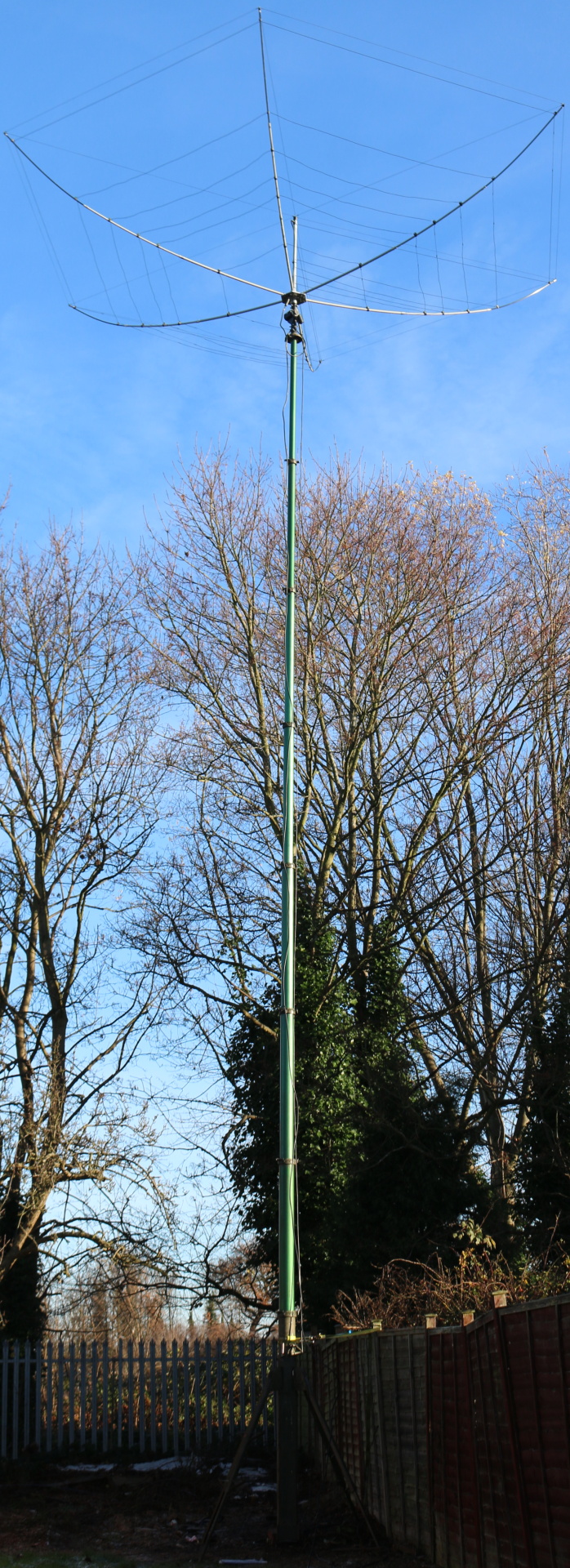- Written by: M0VSE
One of the often overlooked aspects of amateur radio is the importance of being able to monitor the quality of your outgoing signal and to ensure that you aren't transmitting an excessively wide or out-of-band signal. The UK licence states:
"Whatever class of emission is in use, the bandwidth occupied by the emission is such that not more than 1% of the mean power of the transmission falls outside the nominal modulated carrier bandwidth."
Things are slightly more "nailed-down" in the USA where regulations state for transmissions below 30 Mhz, any spurious emission must be at least 43dB below the mean power of the fundamental emission, and for 30-224 Mhz, unwanted emissions must be at least 60dB below.
- Written by: M0VSE
In June 2018, the UK communications regulator, OFCOM, decided to sell-off some old equipment and vehicles. Included within this was a 2009 Nissan Patrol 3.0d which came complete with a 9.6m Clark pneumatic mast (on a retractable roof trolley) and a bench fitted in the rear with mains hookup and 110Ah battery/inverter.

In a moment of what I call, absolute clarity (and my family call something else!). I placed a bid on this vehicle and subsequently won it. The vehicle didn't come with a compressor for the mast but it did have all of the pipes and mounts so I managed to get the matching compressor on one of the other auction lots.
- Written by: M0VSE

If you aren't interested in the "background" of where VSELink came from, click here to go straight to the instructions!
One of the recent innovations that SDR radios have provided is the ability to display cluster/skimmer spots within the SDR Panadaptor. This facility is further advanced by logging programs which are able to customize the colour of displayed spots depending on various criteria. This is especially useful in contests where the spot can be used to indicate worked/multiplier status.
- Written by: M0VSE
Regular readers will be aware of my contant battle with noise, both natural (QRN) and man-made (QRM) and some of my past attempts to mititage them. These include the purchase of a Wellbrook loop and both a WiMo QRM Eliminator and an MFJ-1026.
Both the WiMo and MFJ are quite capable at "nulling-out" noise sources but as one of my primary interests is 80m contesting, they just take too long to setup for each signal which really rules them out unfortunately. I had also mounted the Wellbrook on a cheap "TV" rotator but found that the nulls didn't seem to be deep enough for me to effectively remove the most persistent of noise sources that I encounter in my heavilly developed QTH.
Sometime ago I became aware of Chavdar LZ1AQ and his designs for an active loop antenna amplifier (AAA-1) but what specifically interested me was the combination of multiple AAA-1 amplifiers with a variable delay line (VDL-1) which allows you to effectively steer the "array" with simple controls. So I decided to purchase a VDL-1 and 3 x AAA-1 and see if I could build a steerable array.

Read more: The importance of test equipment